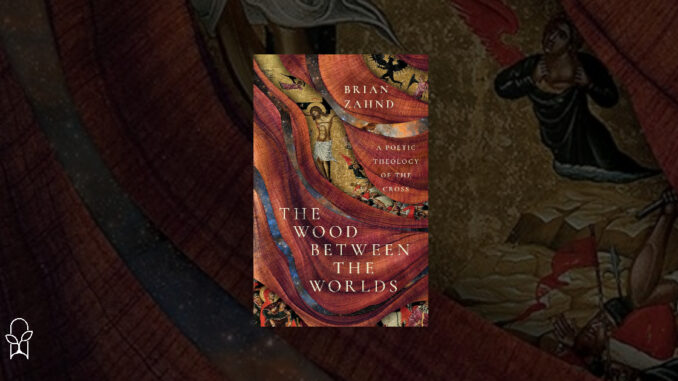
Also by this author: When Everything's on Fire: Faith Forged from the Ashes, The Wood Between the Worlds: A Poetic Theology of the Cross
Published by IVP on February 6, 2024
Genres: Non-Fiction, Theology
Buy on Amazon
Goodreads

The cross is the heart of Scripture
Everything about the gospel message leads to the cross, and proceeds from the cross. In fact, within the narrative of Scripture, the crucifixion of Jesus is literally the crux of the story―the axis upon which the biblical story turns. But it would be a mistake to think we could sum up the significance of the crucifixion in a tidy sentence or two. That kind of thinking only insulates us from the magnificence of what God has done. In our ongoing quest to make meaning of the cross, we need to recognize that this conversation will never conclude―that there is always something more to be said.
Brian Zahnd reminds us that the meaning of the cross is multifaceted and should touch every aspect of our lives. Just as gazing through the eyepiece of a kaleidoscope reveals a new geometric image with every turn, Zahnd helps us see that there are infinite ways to behold the cross of Christ as the beautiful form that saves the world. The Wood Between the Worlds is an invitation to encounter the cross of Christ anew.
Brian Zahnd begins The Wood Between the Worlds: A Poetic Theology of the Cross with the words “I dare to write about God, which is, admittedly, an audacious undertaking.” This sentence, I think, encapsules the tone and the content of everything that is to follow in the book. Zahnd’s intention is to engage in theopoetics, that is, to use the language of poetry to explore the nature of God. It creates a tone that is a little more mystical, a little more artful, and in all candor, a little more pretentious than most books about God.
The book is a series of essays focused on the death of Jesus, with the cross being metaphorized in the title, The Wood Between the Worlds. This is also the title of Zahnd’s opening essay, which highlights the ubiquitous presence of the cross since the crucifixion of Jesus. The crucifixion, Zahnd says, is “an inexhaustible revelation of who God is.” Zahnd’s focus is not historical or apologetical, but mystical: he invites readers to sit within the mystery of the cross and how the event of the death of God in Jesus changed everything.
There are nineteen essays in all, each about ten pages long. Some of them are practical. For example, Zahnd reflects on the execution of Jesus and writes that capital punishment is anti-Christ. Others are more theological, such as when Zahnd reflects on the harrowing of hell and makes more implications of what this means in terms of God’s justice and judgment. Some draw comparisons to history, such as the chapter “The Lynching of the Son of Man,” which compares the death of Jesus to the lynching of Black bodies in the United States. Others focus on biblical exegesis.
Overall, I feel like one’s experience with The Wood Between the Worlds will very much differ based on one’s previously-held opinion of Zahnd. There’s really nothing in this book—outside of some undeveloped thoughts on universalism and God’s redeeming judgment—that stands out as something that’s not been said in books about the cross a hundred times over. The “theopoetics” invites mystery but also creates it through obfuscating and metaphorical language. In other words, Zahnd occasionally mystifies what is clear. It’s a rewriting of some standard devotions on the cross in theological and mystical language with references to church history and classic literature. Strip all that away and it’s really Zahnd’s tone, not the content that is “theopoetic.” So, if you really like Zahnd, you’ll probably like this. If you don’t, it may come across as a little pretentious.
Personally, I like was Zahnd has attempted—but I think the short size of the essays kept him from developing the metaphors and imagery with a depth to really build the theopoetics beyond the superficial. It read to me like a standard Easter devotional written fancily, rather than actually breaking new ground when it comes to engaging the mystery of the cross. When The Wood Between the Worlds does actually begin to go outside the lines of what is typical of books like this—his discussion of the harrowing of hell being the most prominent example—it felt like parts of it were left undeveloped both because of space and to preserve the mystery. In the end, The Wood Between the Worlds is an attempt to do something new, and I appreciate it for that. I wish there had been fewer essays with deeper imagery and metaphor and a stronger focus on the mystical aspects of the cross.
